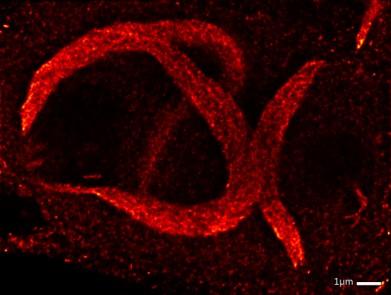Researchers discover a viral protein similar to prions
Published on 01 July 2020

Rift Valley fever (RVF) can infect humans and livestock—especially ruminants like cows and sheep—through bites from infected mosquitoes. Initially found in Sub-Saharan Africa, the virus has spread to nearby regions like the Middle-East and Madagascar, and it could potentially make its way to Europe. Few studies have been carried out on this virus, and, although it is known to be deadly, the exact mechanism through which it causes death remains unknown.

A team of INRAE researchers, together with colleagues from the Pasteur Institute, the University of Heidelberg, and the German Cancer Research Centre, became interested in this virus, from the molecular level to its behaviour on the host. They discovered that a viral NSs protein, produced in the infected cells, forms large clusters similar to the amyloid fibrils. The team studied the protein from every angle, combining different approaches such as biochemistry and microscopy. They were able to conclude that this protein forms long filaments, which react to the usual dye, marking the amyloid fibrils. Their microscopic observations showed that they formed rapidly, within 5 hours. Researchers were then able to study the protein in an infectious context, establishing that these fibrils play a major role in the virus’s ability to thwart the immune response, and are probably responsible for the virulence of RVFV.
Their results represent substantial progress in our understanding of this virus, a real concern for African countries and their neighbours. The work on the NSs protein shows the existence of a new class of viral protein, which, like the prion, is capable of forming amyloid-like fibrils.
1 Amyloid Fibrils result from the misfolding and aggregation of host cell-encoded proteins into highly ordered linear fibrils. To date, close to 50 different human proteins have been found to form amyloid fibrils.
|
Reference: Léger P, Nachman E, Richter K, Tamietti C, Koch J, Burk R, Kummer S, Xin Q, Stanifer M, Bouloy M, Boulant S, Kräusslich HG, Montagutelli X, Flamand M, Nussbaum-Krammer C, and Lozach PY (2020). NSs amyloid formation is associated with the virulence of Rift Valley fever virus in mice. Nature Communications, doi: 10.1038/s41467-020-17101-y |
